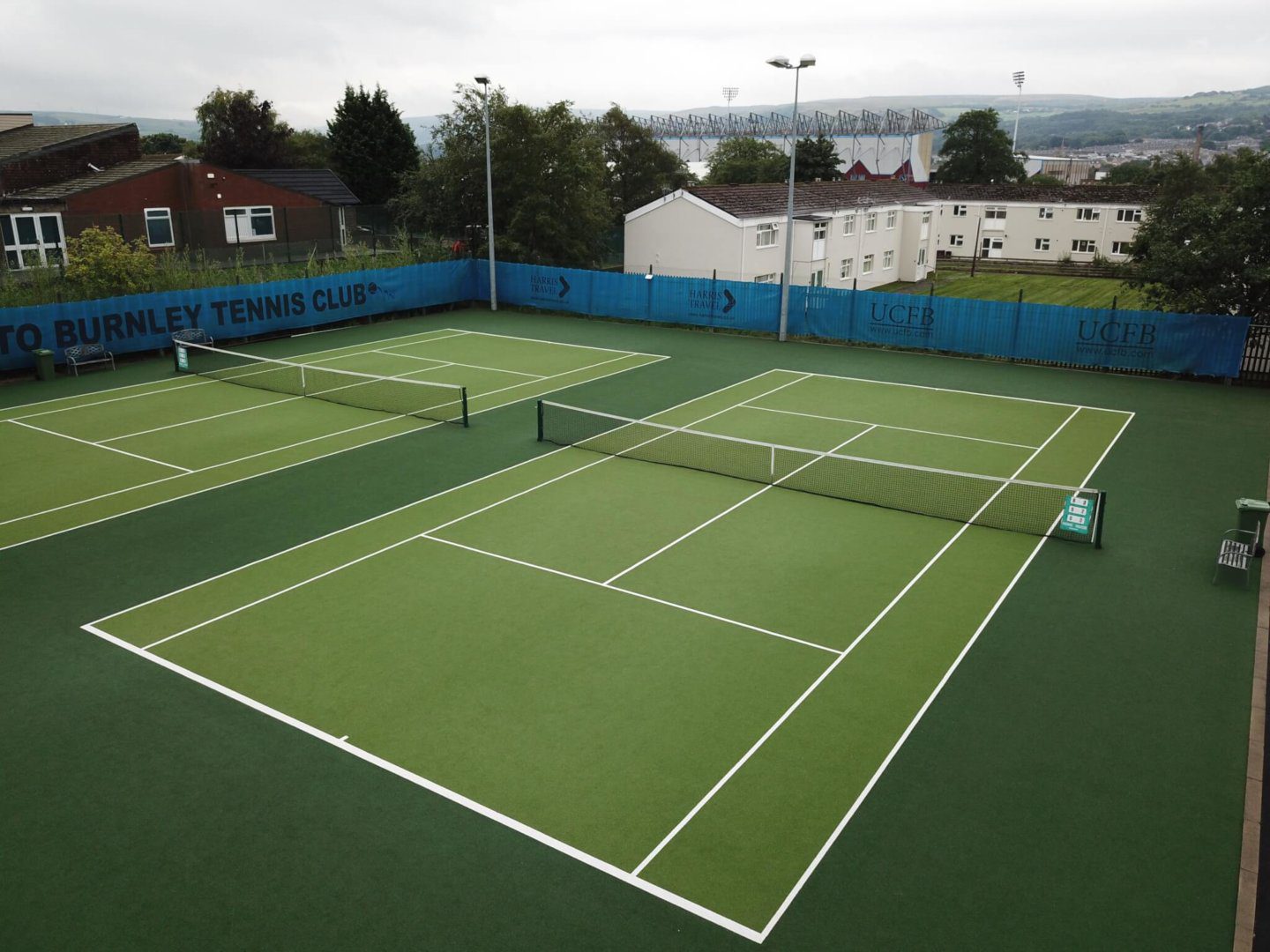
Popular with players for the many benefits it offers, it’s no wonder more clubs are considering investing in a synthetic grass tennis court. In fact, earlier this year, there were even reports that Wimbledon chiefs were looking to potentially install an artificial playing surface on Centre Court. With this in mind, we caught up with Andy Burrell, Managing Director at Chiltern Sports Contractors, to find out how they are built and what to consider when having one installed.
The first factor in building a tennis court is to carefully choose who you work with. There are lots of companies who are able to build tennis courts, but not all are SAPCA approved. Working with a contractor who has been audited and approved by SAPCA means they are financially stable and have demonstrated the technical expertise, experience and quality to carry out the installation. In fact, most local authorities will only use a SAPCA contractor for this reason, and the Royal Tennis Association has also adopted this as a requirement for any projects they fund too.
Next, you must find an area of land that is big enough, and in an appropriate position.
For tournament play, the International Tennis Federation (ITF) and Lawn Tennis Association (LTA) advise that a single court should ideally be 36.57m x 18.29m, which includes run-offs of 6.40m at each end and 3.66 on either side. The minimum club court size is 34.75m x 17.07m, however, areas such as public parks may be permitted even further reductions.
Orientation is also crucial. As the sun rises in the East and sets in the West, it is preferable to always have courts running from North to South to avoid the sun causing disruption to play.
Once you’ve found the site, the contractors will need to assess the ground condition. Doing so will ensure the foundation is suitably designed with the appropriate depth of sub-base for the type of ground you have. This is outlined in the SAPCA code of practice.
For example, it is widely known that clay soils are one of the worst types as they are prone to swelling when they come into contact with moisture, and also cracking and shrinking when dehydrated. However, it is still possible to build a tennis court on clay ground, you just need to ensure the level of foundation stone below the court meets the depth recommended for this type. Failing to do so could eventually cause undulations and inconsistencies on the playing surface.
The sub-base (foundation) itself should consist of free-draining primary aggregate, such as a Type Three stone.
All overlying topsoil must be excavated and removed down to the underlying sub-soil. The excavated levels then need to be assessed relative to the designed construction depth of the new court and an additional excavation or “Cut and fill” carried out to provide a compacted excavated formation level with designed falls to suit the new court construction. A geotextile membrane is laid at formation level, prior to the sub-base being placed and compacted to finished level tolerance of + 25mm / – 50mm.
As a tennis court is a porous construction, it is also important to include a perimeter drain, below the level within the subsoil. This collects any water that comes through and runs out to a soak away 5-6 metres from the court.
Next, the perimeter of the court is set out to the required dimensions using either precast concrete edgings or block pavers, if preferred.
Following this, post sockets are installed in a minimum 750mm x 750mm x 600mm concrete foundation to location, level and strict tolerance. The net posts are not installed until the court is fully constructed and surfaced. However, once in place, they should always be slackened when not in use as this will prevent strain on the posts and nets and stop them deteriorating over time.
Fence posts are installed flush with the outer face of the court perimeter edging. Traditionally, tennis courts are fenced with chain-link metal. This is popular with players as if the ball hits it will deaden. However, many public facilities are now using weldmesh as it is more robust and requires less maintenance. While it does have a longer life span, it isn’t always a favourite with players as the ball often bounces off it.
Now it’s the asphalt layer. Proprietary porous asphalt for a tennis court is generally laid in two layers with a 40mm compacted depth of binder course and a 25mm compacted depth of wearing / surface course, which is finished to strict level tolerances as set out in the SAPCA Code of Practice.
Finally, from artificial clay to synthetic grass, it’s time to lay the tennis turf. For this, the asphalt base should be swept and cleared of any debris so the carpet can be installed and seamed using proprietary seam tape and adhesive. A sand infill should then be applied, in accordance with the manufacturer’s recommendations for the particular synthetic surface being installed.






